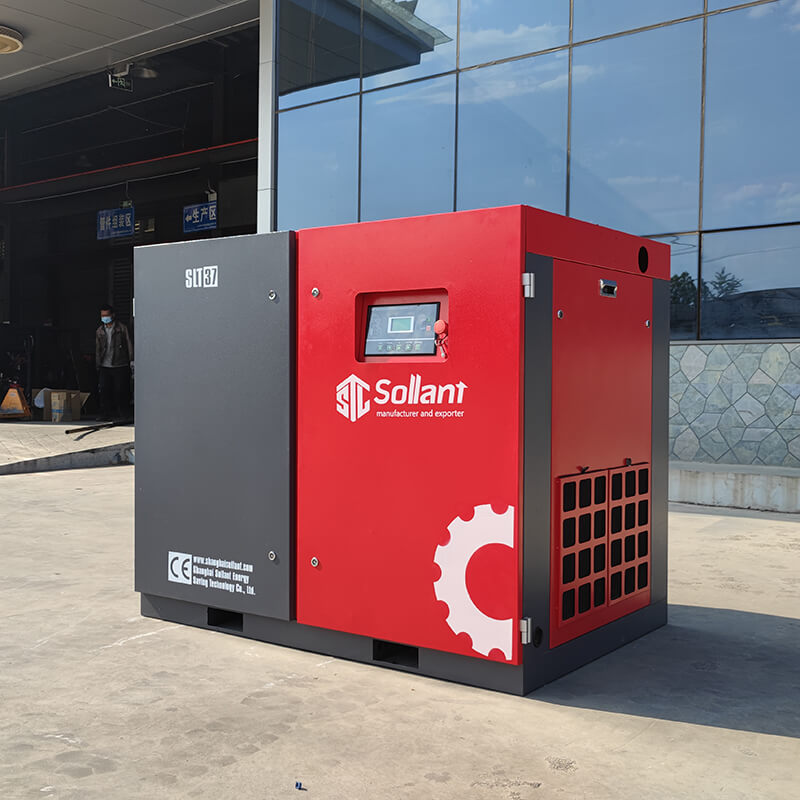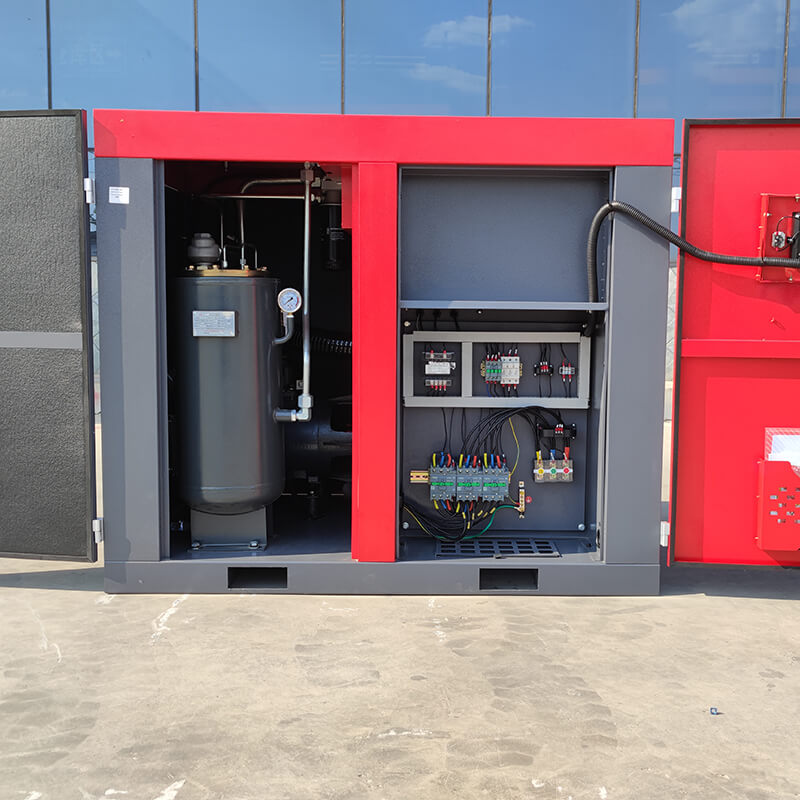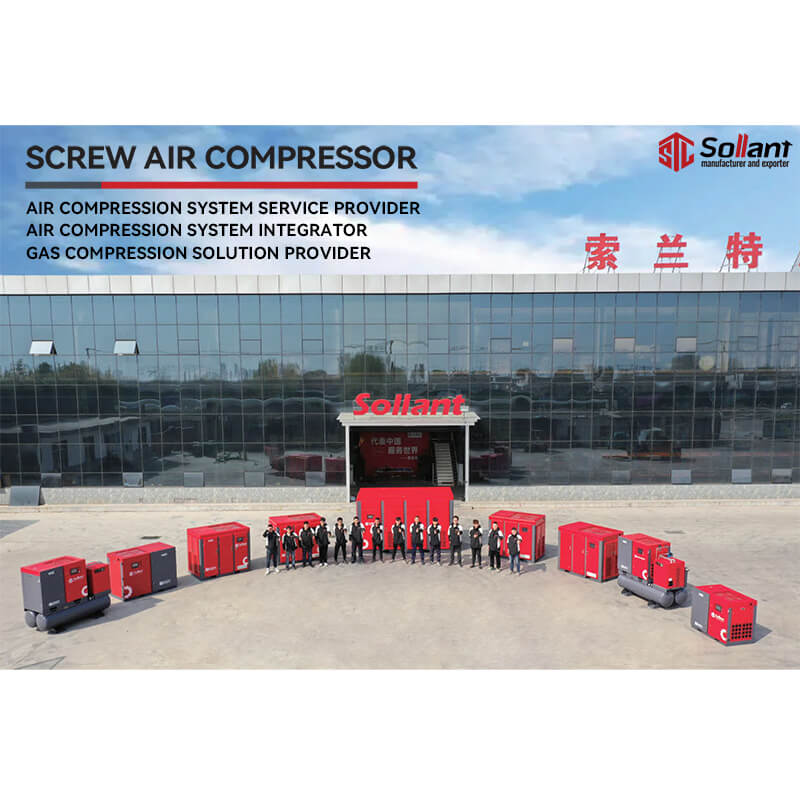The selection of the air compressor is mainly based on the working pressure and flow of the pneumatic system.
The working pressure of the gas source should be about 20% higher than the maximum working pressure in the pneumatic system, because the along-course loss and local loss of the gas supply pipeline should be considered. If the working pressure requirement is low in some parts of the system, a pressure reducing valve can be used to supply air. The rated discharge pressure of the air compressor is divided into low pressure (0.7~1.0MPa), medium pressure (1.0~10MPa), high pressure (10~100MPa) and ultrahigh pressure (above 100MPa), which can be selected according to actual needs. The common working pressure is generally 0.7-1.25.
First, select the type of air compressor according to the characteristic requirements of the air compressor. Then, according to the two parameters of working pressure and flow required by the pneumatic system, determine the output pressure pc and suction flow qc of the air compressor, and finally select the model of the air compressor.


(1) The output pressure of the air compressor pc pc=p+∑△p
pc: the output pressure of the air compressor
p: The maximum operating pressure of the pneumatic actuator ∑△p: The total pressure loss of the pneumatic system. In general, another ∑△p=0.15~0.2MPa.
(2) The suction flow qc of the air compressor does not set up an air tank, qb=qmax sets up an air tank, qb=qsa
qb: The flow rate provided by the pneumatic system qmax: The maximum air consumption of the pneumatic system qsa: The average air consumption of the pneumatic system The suction flow of the air compressor, qc=kqb qc: The suction flow of the air compressor
k: Correction coefficient. The main considerations are the leakage of pneumatic components, pipe joints, etc., the estimation error of the air consumption of the pneumatic system, the utilization rate of multiple pneumatic equipment used at different times, and the possibility of adding new pneumatic equipment. Generally k=1.5~2.0.


(3) The power P of the air compressor
p=(n+1)*k*p1*qc*(pc/p1)^{[(k-1)/[(n+1)*k]-1}/(k-1)*0.06
The use of air compressor
a. Traditional air power: pneumatic tools, rock drills, pneumatic picks, pneumatic wrenches, pneumatic sandblasting
b. Instrument control and automation devices, such as tool replacement in machining centers, etc.
c. Vehicle braking, opening and closing of doors and windows
d. In the air-jet loom, compressed air is used to blow the weft yarn instead of the shuttle
e. Food and pharmaceutical industries, using compressed air to stir slurry
f. Starting of large marine diesel engines

g. Wind tunnel experiments, underground passage ventilation, metal smelting
h. Oil well fracturing
i. High pressure air blasting coal mining
j. Weapon system, missile launch, torpedo launch
k. Submarine ups and downs, shipwreck salvage, seabed oil exploration, hovercraft
l. Tire inflation
m. Spray paint
n. Bottle blowing machine
Sollant Group-Professional Compressed Gas Solutions Provider





